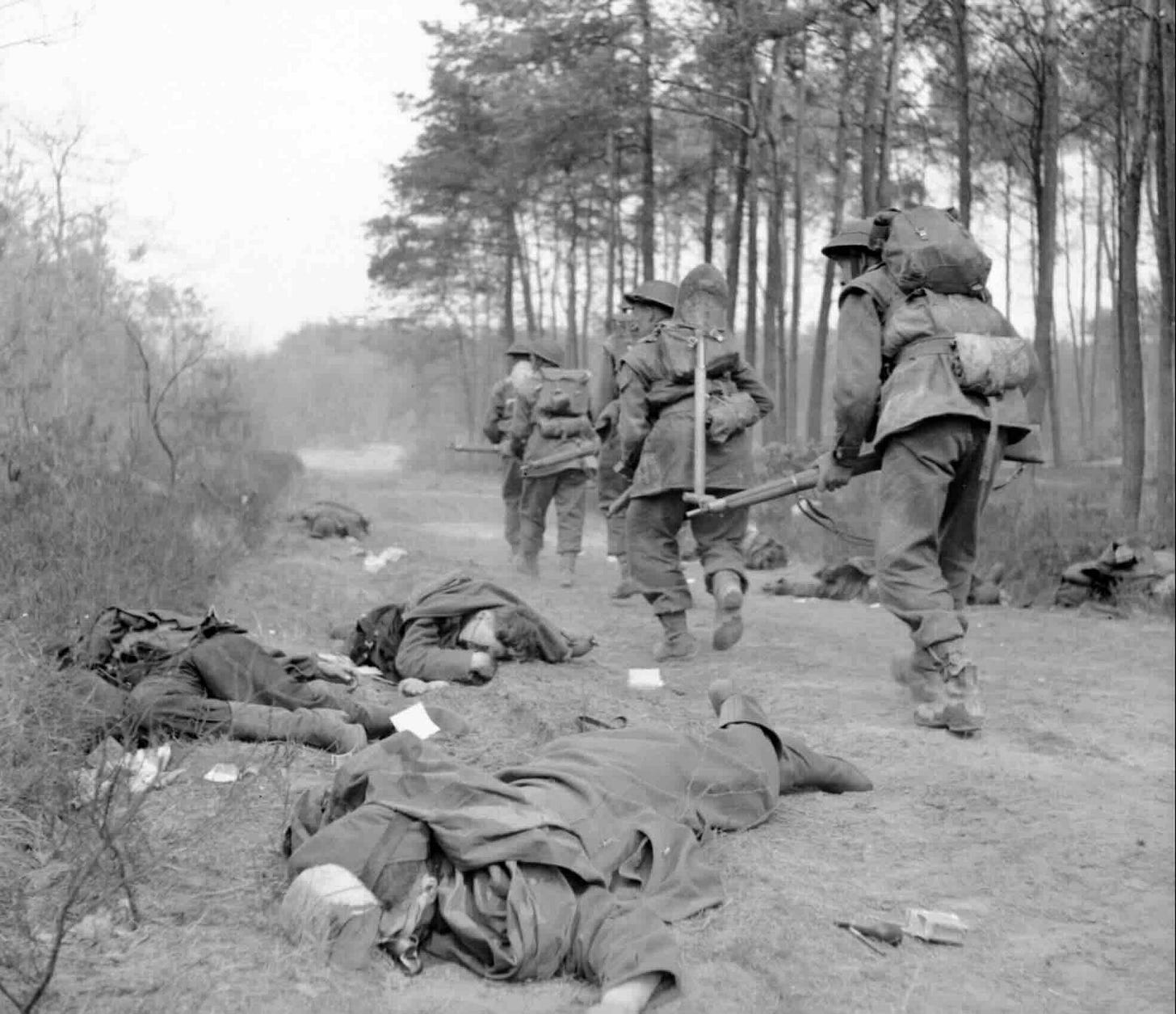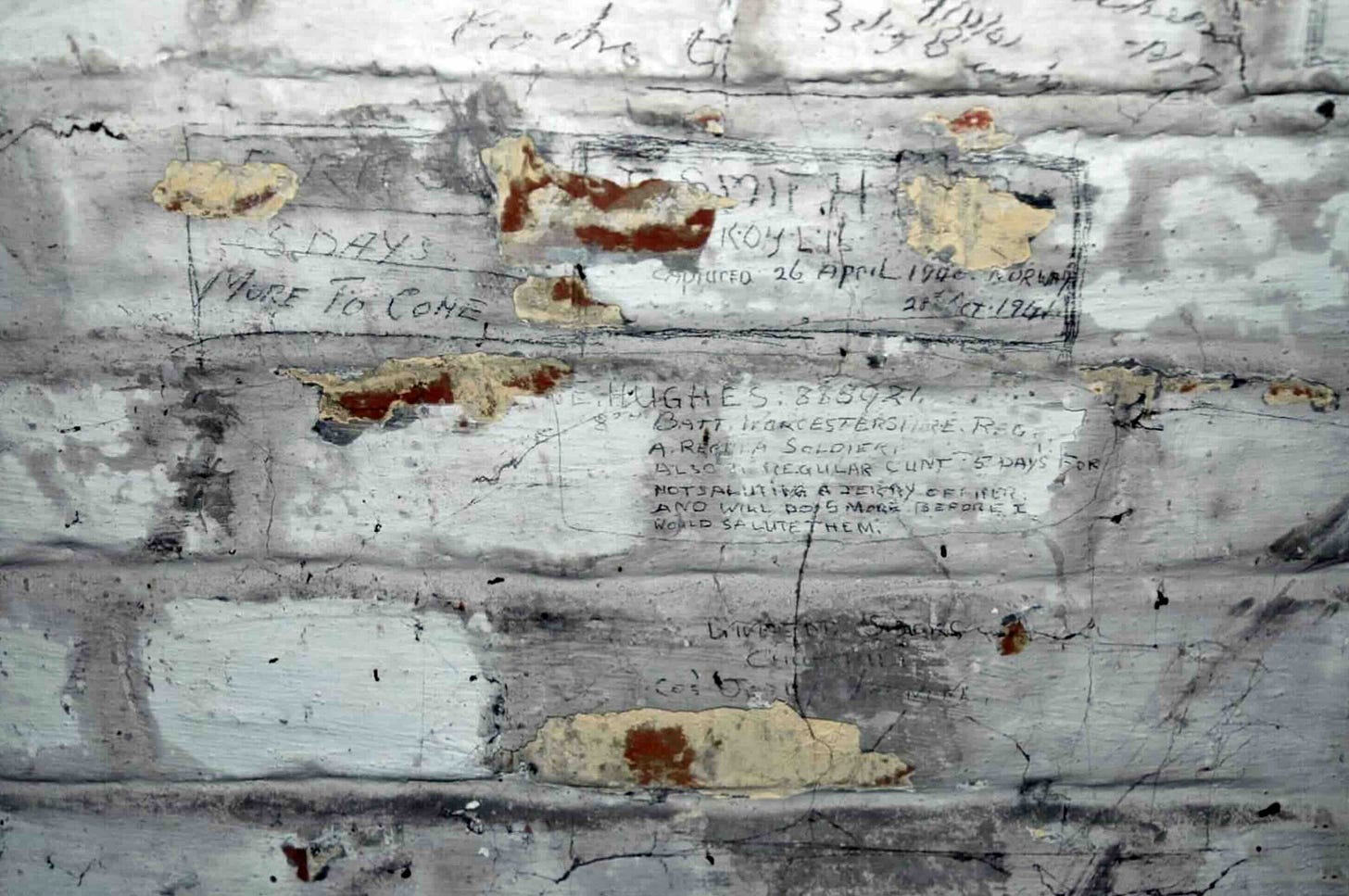'Fire and Movement'
27th March 1945: A 'hairy day' for a young officer as his infantry battalion attacks prepared Fallschirmjäger positions - and the tanks get bogged down



The fighting in World War II is sometimes characterised as the brilliant German military mind, with his skilfully deployed troops and highly motivated men being eventually overcome by the overwhelmingly better firepower of the Allies with their air superiority. Such a characterisation ignores the reality of most battlefields at the time. Ultimately, it was necessary for the Allied men on the ground, the infantry, to get to grips with the opposition, often in a very real sense. No amount of firepower could overcome well-dug-in defenders alone.
… this excellent defensive position was occupied by elite and determined parachutists
The battle in Germany was fought against a mixed collection of defenders, some diffident, some very determined. Yet by now, the Allied infantry had become a match for the best of them and were equally skilled and determined. It was the individual tenacity of the ordinary infantryman, together with the courageous leadership seen at the Section level (25th March) or at the Platoon level (26th March) that won the overall battle. An insight into the Company level command completes the picture.
Twenty-three-year-old Peter Hall1 was a Temporary Major commanding 'A' Company in the 1st Battalion Worcestershire Regiment2, 43rd Wessex Infantry Division, they faced German Fallschirmjäger, parachute troops, in prepared positions on an autobahn :
The autobahn was not, really, an autobahn at all. It was still under construction. It was a heaped-up embankment which offered superb fields of fire against an assaulting force. Furthermore, this excellent defensive position was occupied by elite and determined parachutists and backed by skilled enemy artillery. The enemy had had time to site machine-gun positions forward of the autobahn. The 27th March was going to prove, for both sides, a very hairy day!
...
It was a miracle of military efficiency that, in spite of incredible logistical difficulties, we crossed the start line on time, and with the correct groupings. Then, things started to go wrong. From start line to the objective for the assault the distance was about 1000 yards.
We, the infantry, had to advance over flat, open country, with practically no cover from the enemy’s machine-gun fire. And this was intense! We had to rely, solely, on the principle of fire and movement (which I have described earlier) and close with the enemy as quickly as we could.
An additional complication was that, although the actual day of our assault was sunny, the ground was sodden and muddy. It eventually proved impossible for tank movement. Although this was a major disadvantage, it did not detract from the ferocious firepower that my supporting troop of tanks were able to bear onto the enemy. This was a contributing factor to our final success in this particular, hard-fought engagement.
‘A’ Company had advanced to within about 200 yards of our objective when our supporting tanks bogged down. Stuck in the mud. I went forward to the troop leader’s tank and pressed the button on the rear of the vehicle. This should have made it possible for voice communication between us by telephone. For some reason it was not working! The tank just sat there like an enormous iron elephant’s turd. No response from the crew inside. Their machine gunner continued to pour hot lead into the heaped-up autobahn - but not where I wanted it!
It was vital that I talk to the troop leader, and so I clambered up onto the tank and banged, with the butt of my machine pistol, onto the closed-down lid of his turret. An age seemed to pass. I felt like Long John Silver’s parrot, perched on his shoulder when he was leading the pirate charge against the stockade in Treasure Island. I was 10 feet off the ground and there was a lot of ‘rubbish’ roaring about.
Under these circumstances, an infantryman finds that the ground would be a very pleasant place to be! Eventually, the turret trap opened. The troop leader’s head appeared. “What the bloody,” he started to say. “Shut up and listen!” I snarled. “You’re stuck and can’t move. We can and we’re going to. I’m going to do a shallow right-flanking movement onto the objective so that we won’t mask your fire. You will concentrate everything you’ve got onto the following specific areas.” I indicated them by pointing.
“Keep an eye on our movement. It won’t be text-book pretty but we will go split-arse. When you see a red verey light, you will stop firing AT ONCE! Got that?” “Wilco,” he said. “Wilco” means I hear and will comply.
[Hall then sprinted across the battlefield to arrange supporting fire from the neighbouring 'D"Company]
I sprinted back noticing little splashes of mud exploding around me.
I sprinted back noticing little splashes of mud exploding around me. I was being targeted by a Spandau machine-gun. I managed, somehow, to step up a gear or two! I made it back to Peter Wade’s platoon.
“Peter” I gasped, “We’ve got masses of covering fire. We’re going to attack in echelons of platoons. That’s your objective. Get going!” “Right,” he answered. “Nice day, isn’t it?”
Off he went, but unfortunately, not very far. An undetected Spandau machine-gun, immediately on the right flank of his advance and forward of the main enemy positions, opened fire. Peter was severely wounded in the leg and a number of his guys were killed. Although wounded, Peter threw a smoke grenade to his right which obscured the view of the enemy from our advance. A vital factor in our eventual success.
“‘A’ Company,” I yelled, “Follow me!” We dashed forward, rather like a bunch of Fuzzie-Wuzzies in the battle of Omdurman. I would not have scored any ‘Brownie points’ for this manoeuvre had it been an exercise on Salisbury Plain, but we made it.
As we hit the objective what I knew would happen, did! The enemy hit the position which we, minutes ago, had occupied, with a most ferocious Artillery Hate. Fritz was employing his normal defensive tactic: slow down the assault with small arms fire and then, hit it with all the big stuff at your command. In this battle there was lots of it; our speed of advance frustrated the enemy by seconds!
I was sorry for the tankies but, not unduly concerned. Cocooned as they were in their iron contraptions, the worst that they could expect was a headache, unless a tank sustained a direct hit in its petrol tank. I was much more concerned with my own wounded and about ‘D’ Company who had no such protection. However, we had turned the enemy’s flank. ‘A’ Company had kicked open the door and the eventual success of the battalion attack was assured.



This is part of a more extended account that appears in Rogers and Williams (ed): On the Bloody Road to Berlin: Frontline Accounts from North-West Europe & the Eastern Front, 1944-45, from Peter Hall’s unpublished memoirs, Tales of a Disorderly Officer.
The Worcestershire Regiment could claim to be the product of hundreds of years of military tradition, tracing its history back to 1694.

